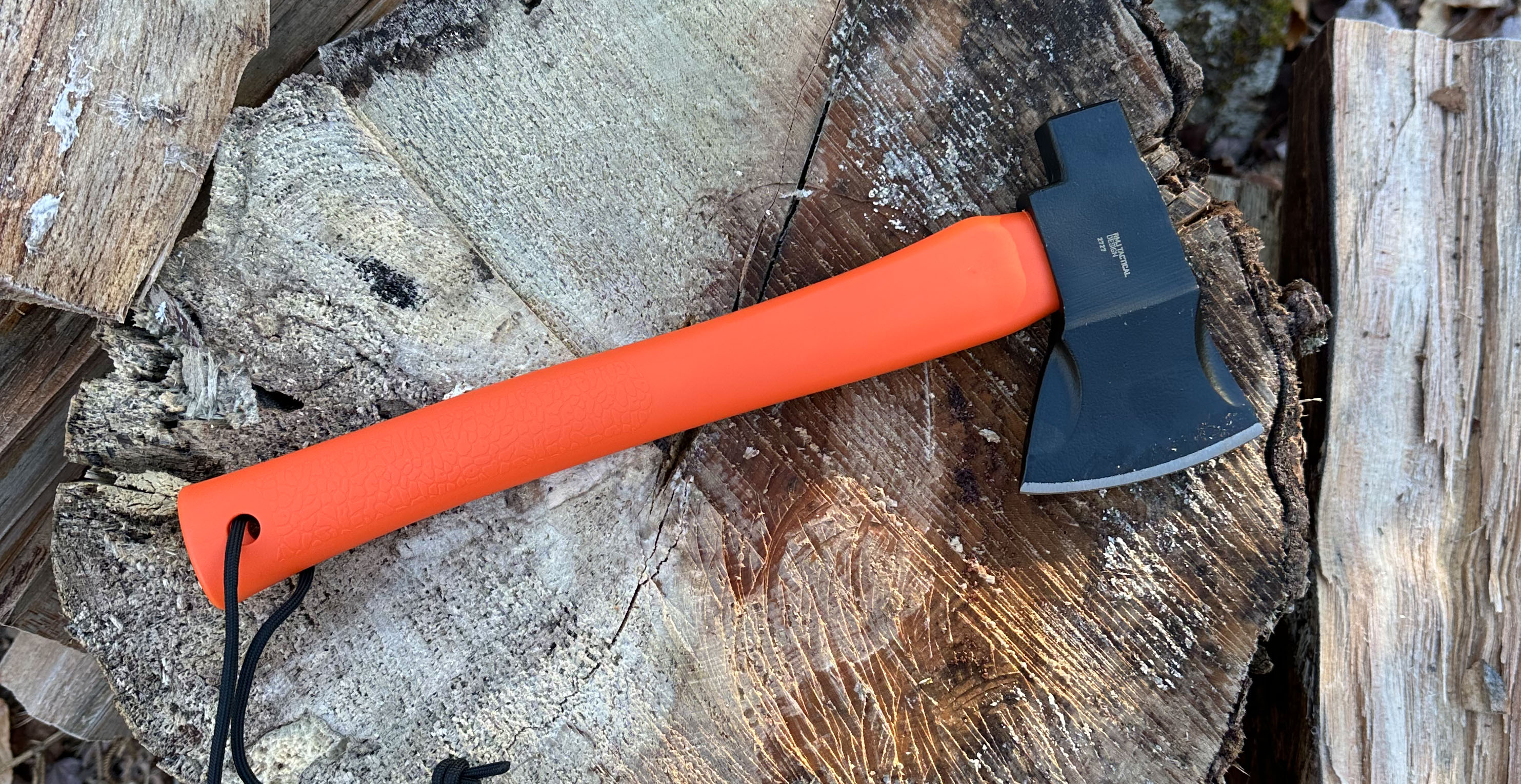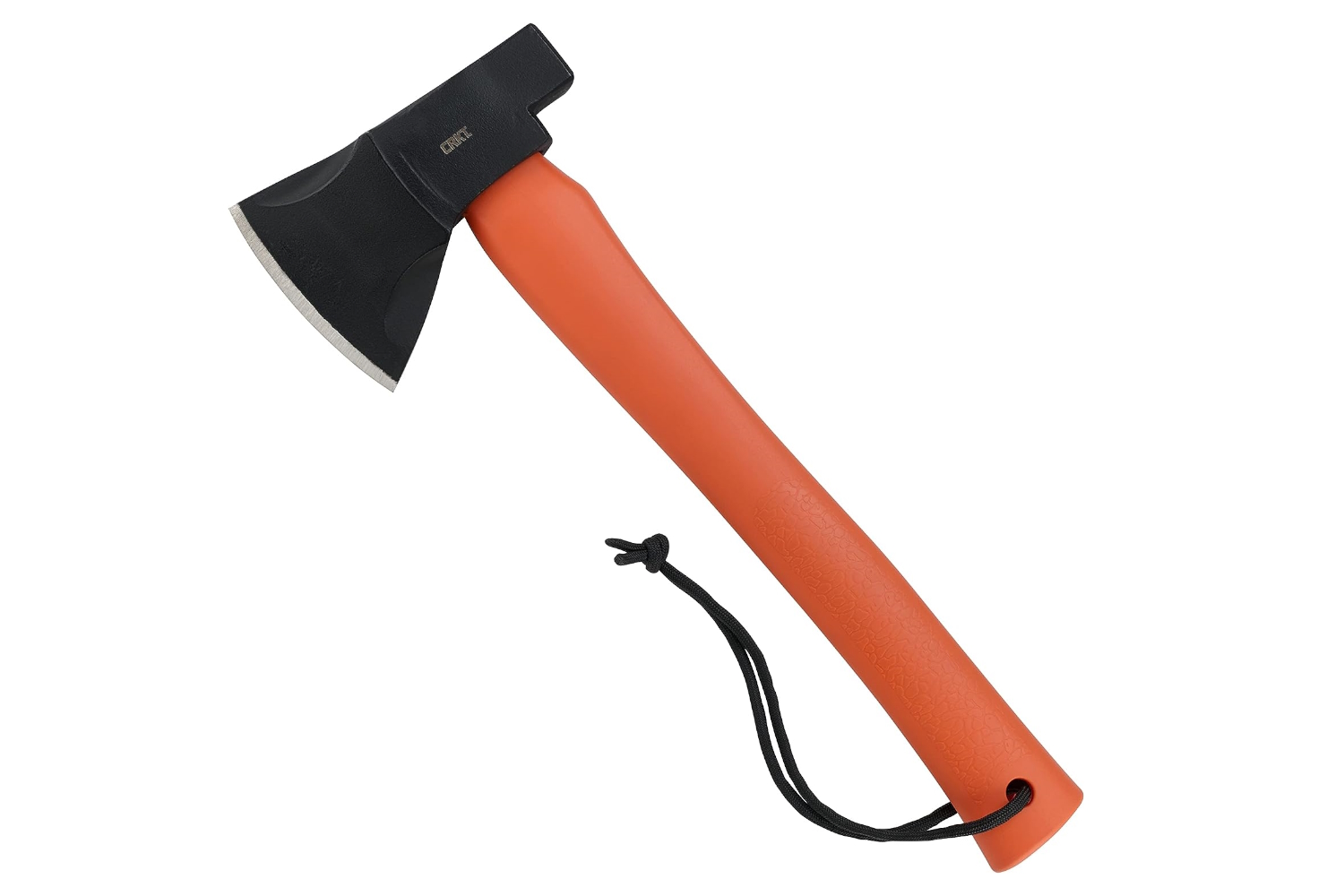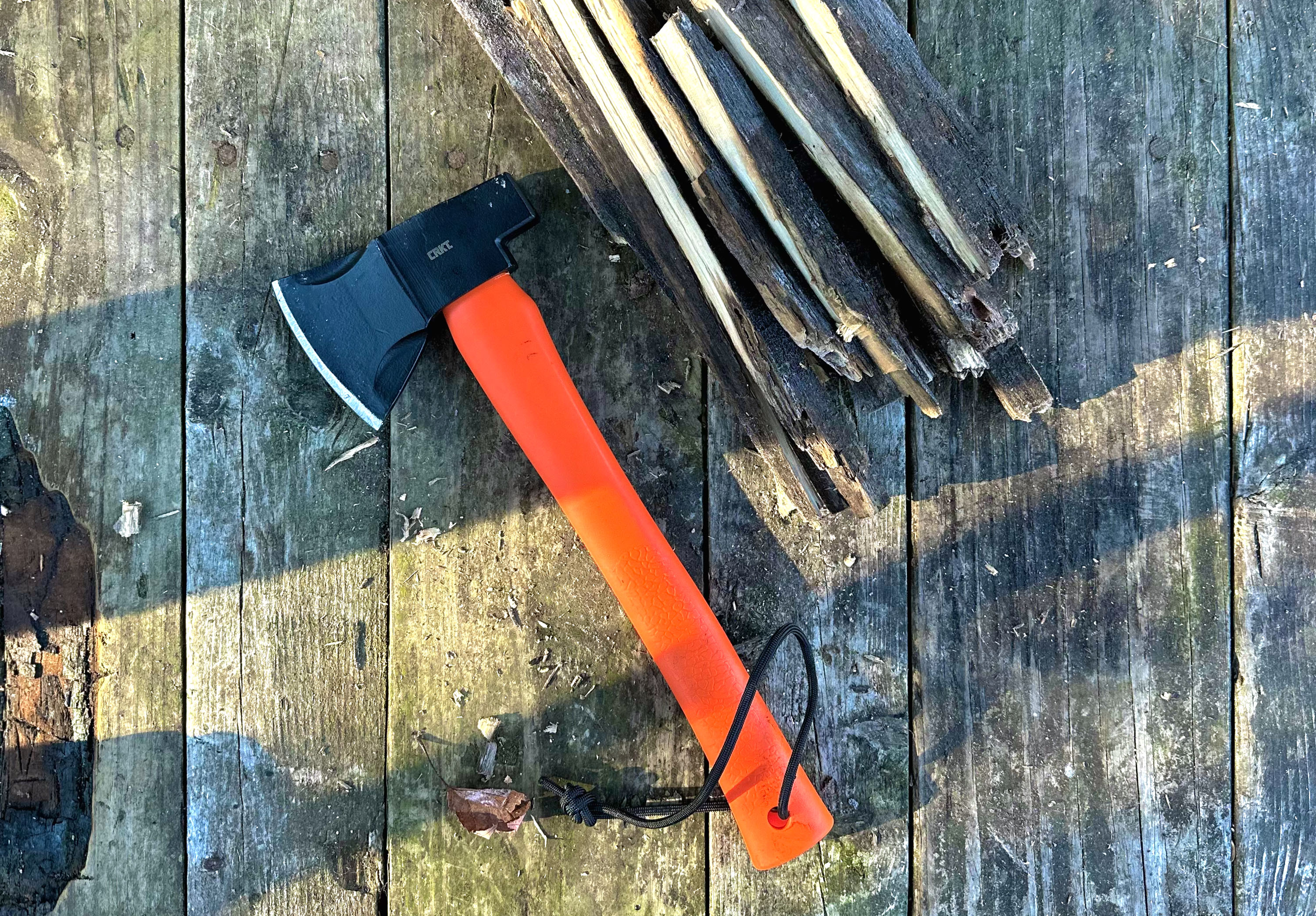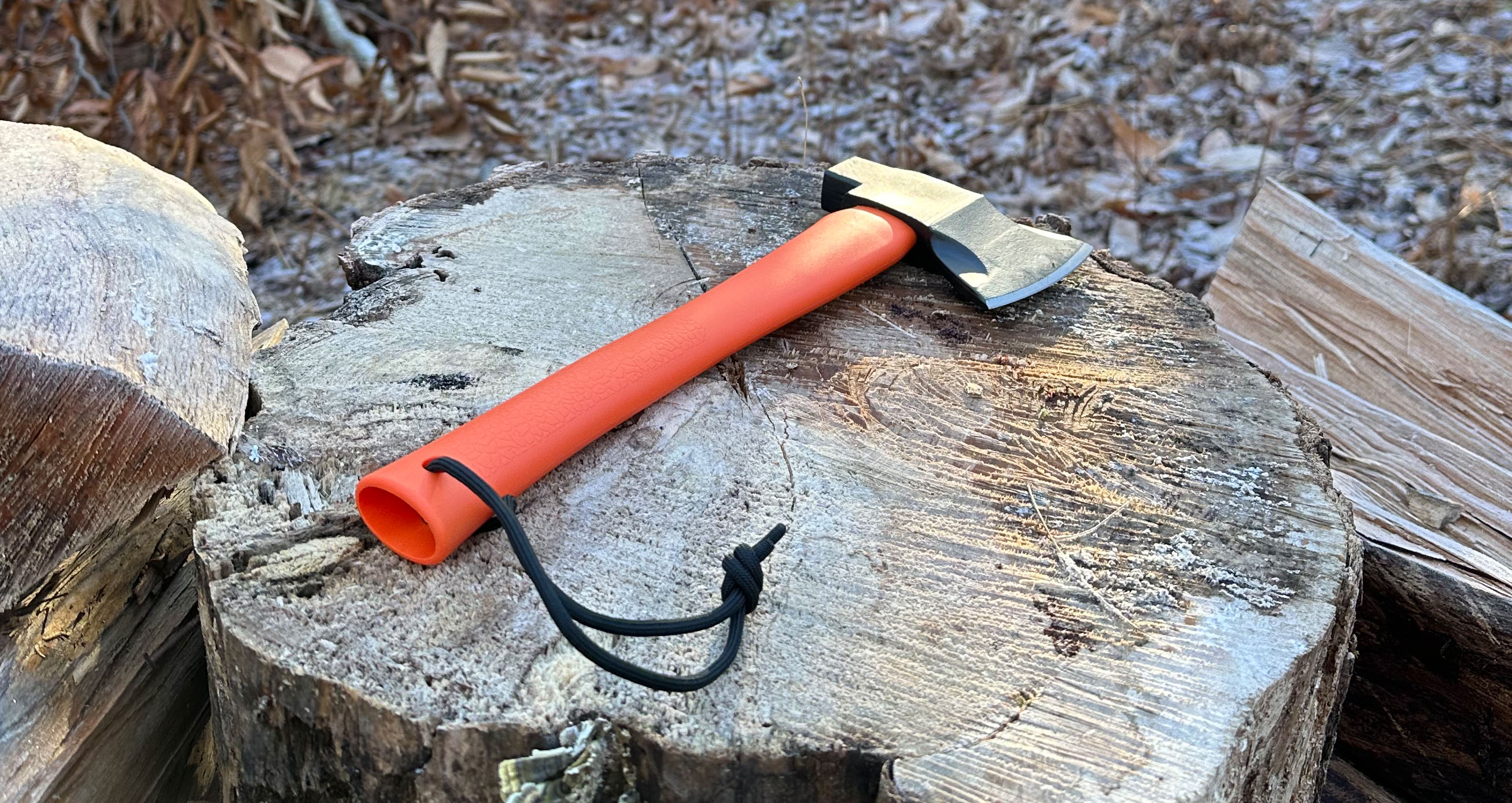Designed by the Algonquins to be a lightweight, easy-to-use weapon and tool for hunting, gathering, and other day-to-day tasks, the tomahawk axe has a long history here in America. The earliest records of the tool go back to 1700.
But while the story of the tomahawk started with Native Americans, it was soon widely adopted by the larger population. Eventually, these tools came to be used by farmers, fur traders, bushmen, and soldiers. Anyone who needed a small, single-handed axe that could be maneuvered quickly and effectively had use for a tomahawk.
Latching on to that bit of history, Oregon-based blade innovators CRKT collaborated with Ryan Johnson of RMJ Tactical. Together they’ve introduced their Chogan Hatchet. Marketed as being “Half hatchet, half axe. Fully built to withstand all tasks,” the Chogan is easily the smallest hatchet I have ever used. But its head is hefty and overdesigned for slicing, chopping, and splitting. It’s an excellent addition both on the trail and at camp.
In short: What the CRKT Chogan Hatchet lacks in size, it easily makes up in form and an expanded line of functions. From its ultra-durable glass-reinforced nylon (GRN) handle to its coated 1055 carbon steel head — styled like a splitting maul — the Chogan hatchet is a great tomahawk to have by your side. It’s durable, it’s compact, and it’s perfect for small camp and cabin tasks. After months of testing, this little hatchet has become a trusty sidekick.
Looking for a camp hatchet? Check out how the Chogan matches up to the rest of our top picks in our Best Camping Hatchets Buyer’s Guide.
-
Cut Quality
7.0
-
Swing Feel
7.0
-
Ease of Maintenance
7.0
-
Durability
8.0
- Weight: 1 lb., 5 oz.
- Overall Length: 13.2"
- Bit Length: 3.2"
- Steel Type: Manganese phosphate coated 1055 carbon steel
- Handle Material: Glass-reinforced nylon
Pros
- Lightweight but effective
- Forged 1055 carbon steel head for long-term abuse
- Glass-reinforced nylon handle is tough
- Broad hammer poll surface area
Cons
- Doesn’t come with a sheath
- Ideally suited for splitting kindling, not much bigger
CRKT Chogan Review
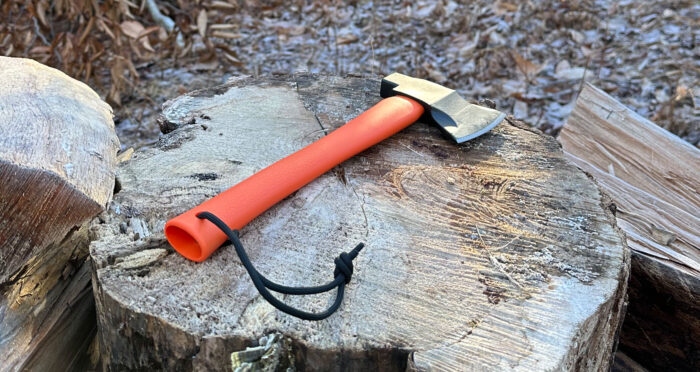
First Impressions
There’s no point in trying to ignore how small the Chogan is. The head is only 4¾” long and 3-5/32” tall. When you consider the size of the head on comparable tomahawks, like the Condor Travelhawk and RMJ’s own Loggerhead, the Chogan is about an inch smaller. In fact, next to most tomahawk axes on the market today, the Chogan is smaller all around.
But, size isn’t everything. So, instead of focusing on what the Chogan might not be able to do, consider what it was made to do. This tomahawk axe was made small to handle small tasks that can be done quickly.
Overall, the GRN handle is very lightweight, and the bottom third of it is hollow — meaning a majority of the 1 pound, 5 ounces of overall weight is coming from the head. The head on the Chogan is styled more like a splitting maul than a standard hatchet. That pays off in spades, as the style of the head and its weight allow it to cruise through kindling and limbs with ease.
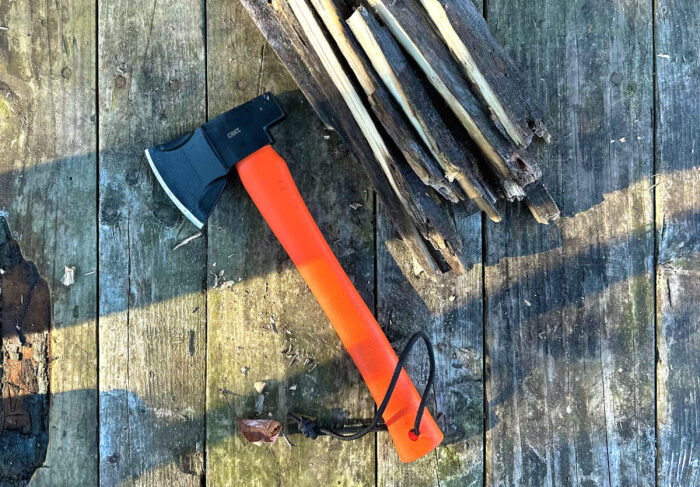
In the Field
Out in the woods, the Chogan Hatchet is best suited for clearing small limbs obstructing the trail or splitting kindling. It can even be used to prepare food in a jam. It’s not great for big tasks like splitting logs. But it’s not made for that. This is a small-scale belt axe that really shines in getting on-the-spot tasks done.
I’ve been carrying the Chogan with me since December. Initially, it was just the go-to kindling splitter-up at a friend’s cabin in Vermont. With the design of the head being so similar to a maul, it broke up dried wood with little to no effort.
Then I started carrying it around with me more and more on the trail. I found myself hammering signs back in place on the adjacent snowmobile trails. One afternoon, I pried open a swollen root cellar hatch. One night, a few oat sodas in, I used it to make stuffed peppers on the fire.
In short, the Chogan became my multitool. I kept it by the wood stove for those middle-of-the-night wood-splitting sessions. I kept it next to my boots so I’d remember to take it when I went out wandering. And, ultimately, I started throwing this tomahawk axe in my pack for days out when I didn’t need anything bigger and didn’t want to wear a belt knife. I ended up making a simple corded loop with a knot to carry it on my belt.
But out of everything it can do, the Chogan lacks a sheath.
The Biggest Drawback: A Sheathless Blade
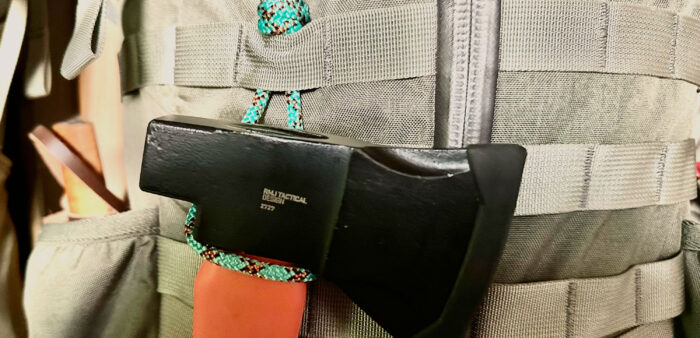
As small and easy to carry as the Chogan is, it only comes with a rubber cover for the blade. That protects it from getting chipped but isn’t ideal for carrying this tool around on your belt or even in a pack.
Now, look, I know my native ancestors who ran through these woods with their bare-bladed tomahawks simply slid into their belts and everything was fine for them. But this isn’t 1750, man. As rugged as I am, I’m soft in comparison to those folks. I can’t just run around with an exposed, sharpened bit on my hip. Even with a rubber boot over it, I’m worried it could slice me. But that’s the way I’m wired.
That said, none of this can take away from the amount of work the Chogan can do for you. In fact, there are plenty of hatchets on the market today that don’t come with a sheath. I think I have just taken to the Chogan so much that the tinkerer in me wants to add to it. And a sheath would be just the thing.
If it really starts bugging me, there are plenty of generic hatchet sheaths out there I could buy to fit my Chogan.
CRKT Chogan Hatchet: Conclusion
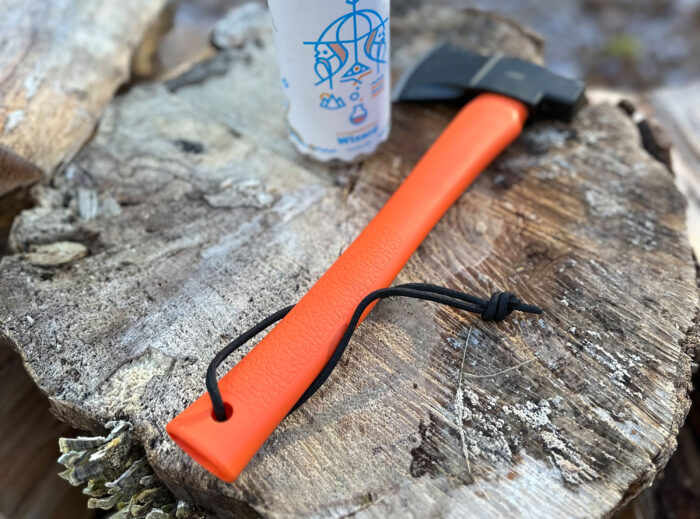
The Chogan Hatchet from CRKT fits perfectly between a bushcraft knife and a standard hatchet in terms of form and function. This makes it the right tool for short hikes, camping trips, or days up at the cabin. It also makes it easy to throw it in a toolbox, in your pack, or even in the canoe for those moments when you aren’t paying attention and drift into the brush.
Its compact size makes it easy to carry and maneuver, and its overbuilt head makes tasks like prepping kindling and clearing branches from the trail effortless. This reduction in effort is due to the mix of the Chogan carrying most of its weight in its head as well as the over-styling of the head to allow it to act like a splitting maul.
I’m glad I had the extended opportunity with the CRKT Chogan Hatchet just to see what it could do. We have some old camp axes hanging around that we use to patch up the cabin after long winters and the Chogan has taken their place. Some of those old axes were twice the size of the Chogan tomahawk axe but had seen their time come to pass. Maybe what I’m trying to say is that the Chogan is my new “old reliable.”
Regardless, this hatchet won’t be sitting in any corner long enough to gather dust and cobwebs. And even if it did, with the manganese phosphate coating, the damn thing would never even rust anyway.
